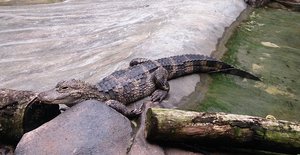Academics, artists collaborate on UW book arts exhibit ‘Just One Look’ (University of Washington)
Edit Public Technologies 06 May 2016
(Source. University of Washington). Arts and entertainment . News releases . Research . UW and the community. May 6, 2016 ... But look closer. The girl's eyes are squeezed shut in effort - it's a tough job ... A page from the artist book 'A Woman's Work,' ... Andrews ... The Impact of Marija Gimbutas on the Modern Goddess Movement,' by Mar Goman, inspired by 'Doing Archaeology as a Feminist' by Alison Wylie, UW professor of philosophy.Dennis Wise ... ###....
New Anthology Celebrates The Foremothers Of The Women's Spirituality Movement
Edit Huffington Post 10 Nov 2015
This was not always the case ... But that didn't particularly matter to her ... Carol P ... But the work of pioneers like Marija Gimbutas -- a 20th-century archaeologist who posited that ancient egalitarian, goddess-centered cultures existed before patriarchal societies, and whose legacy many of the essays touched on -- has yet to make a serious dent in contemporary notions of history and religion, Dexter told The Huffington Post ... ....
Soft Trumps Hard
Edit Huffington Post 25 Aug 2014
Photo. I.Rimanoczy ... But it doesn't have to be this way, Eisler says ... To support the idea that neither men nor women dominated one another, Eisler cites archeological evidence from southeast Europe, especially Crete, drawing much from the research of Marija Gimbutas and James Mellaart, and also relies strongly on the history portrayed by the Ancient Greek poet Hesiod ... He was describing the meetings of his executive team ... Photo. I.Rimanoczy....
The controversial feminist Carmille Paglia - Part 2
Edit The Examiner 15 Jan 2014
Camille Paglia’s Career. Camille Paglia started working as a teacher for Bennington College in 1972. Later in 1973, Paglia was instrumental in getting her workplace, Bennington College to have Sontag as guest speaker ... As was her style of criticizing academic work she criticized Archeologist Marija Gimbutas, feminist scholar Carolyn Gold Heilbrun, and many other contemporaries ... To be continued ....
- 1
- 2
- 3
- 4
- 5
- Next page »









